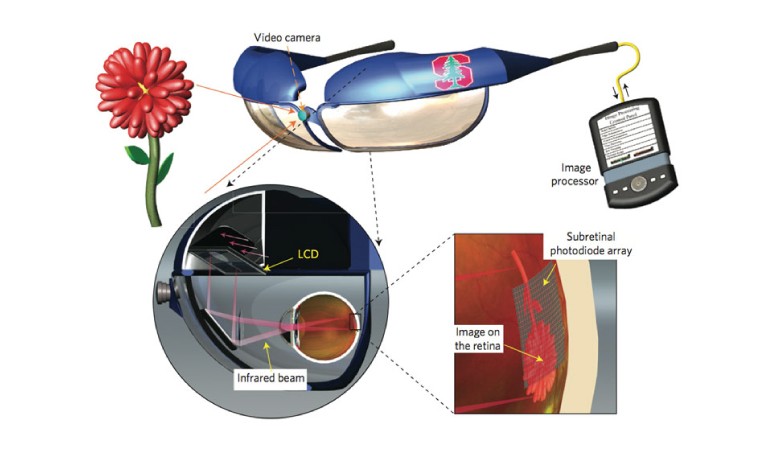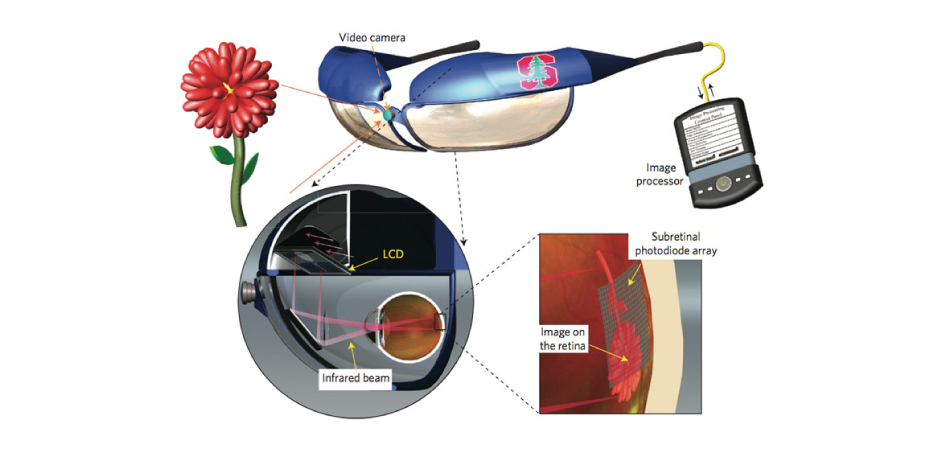Published in this week’s Nature Photonics, researchers at Stanford University have taken the next innovative step in treating retinal disease with a wire-free, battery-free bionic eye. Several forms of retinal implants have been in development for over a year, but until now, all have required cords and power-supplies, much like a small battery-powered video camera in the eye. This new technology, tested only in rats and awaiting human application, uses a small video camera placed in eyeglasses, which then projects the light via pulsed infrared illumination onto the pixels of a subretinal photodiode array which convert the light into stimulation currents which are then sent via normal neural connections to the brain for interpretation, all without a battery or cords. In essence, the miniature video-camera on the glasses projects the image onto an extremely small movie screen at the back of the eye. In retinitis pigmentosa, the photoreceptors on the retina are damaged, and unable to transduce the waves of light that form the image into information that can be interpreted by the brain. Bionic eyes attempt to bypass the damaged cells in the retina and stimulate the healthy nerves and brain, allowing for interpretation of images that could not otherwise be interpreted by the damaged retina.
This new development, while still far from clinical applicability in human subjects, further provides proof of concept for bionic eyes for the treatment of retinitis pigmentosa, and deserves recognition for its advancement of treatment in this, a largely untreatable and debilitating retinal disease.












